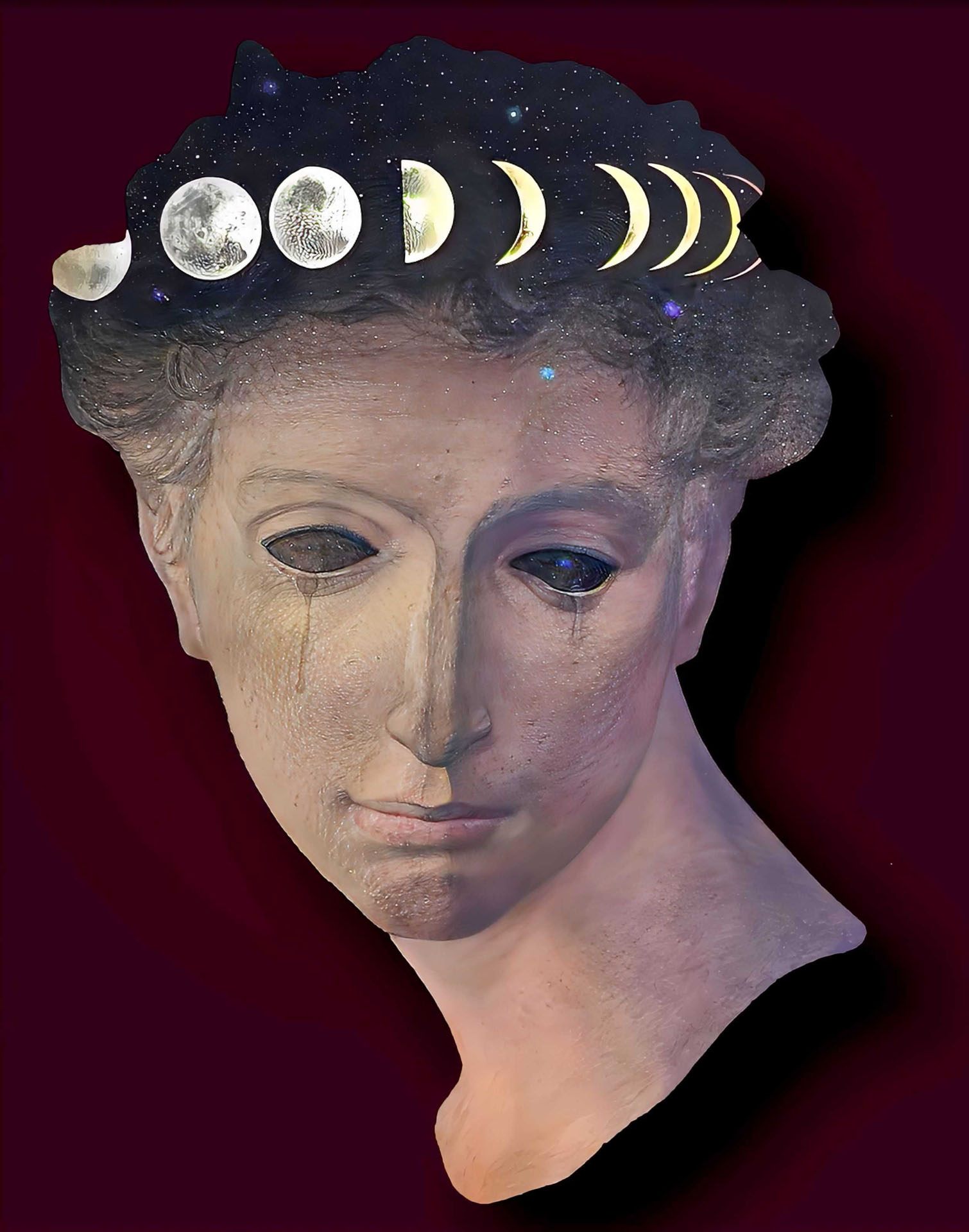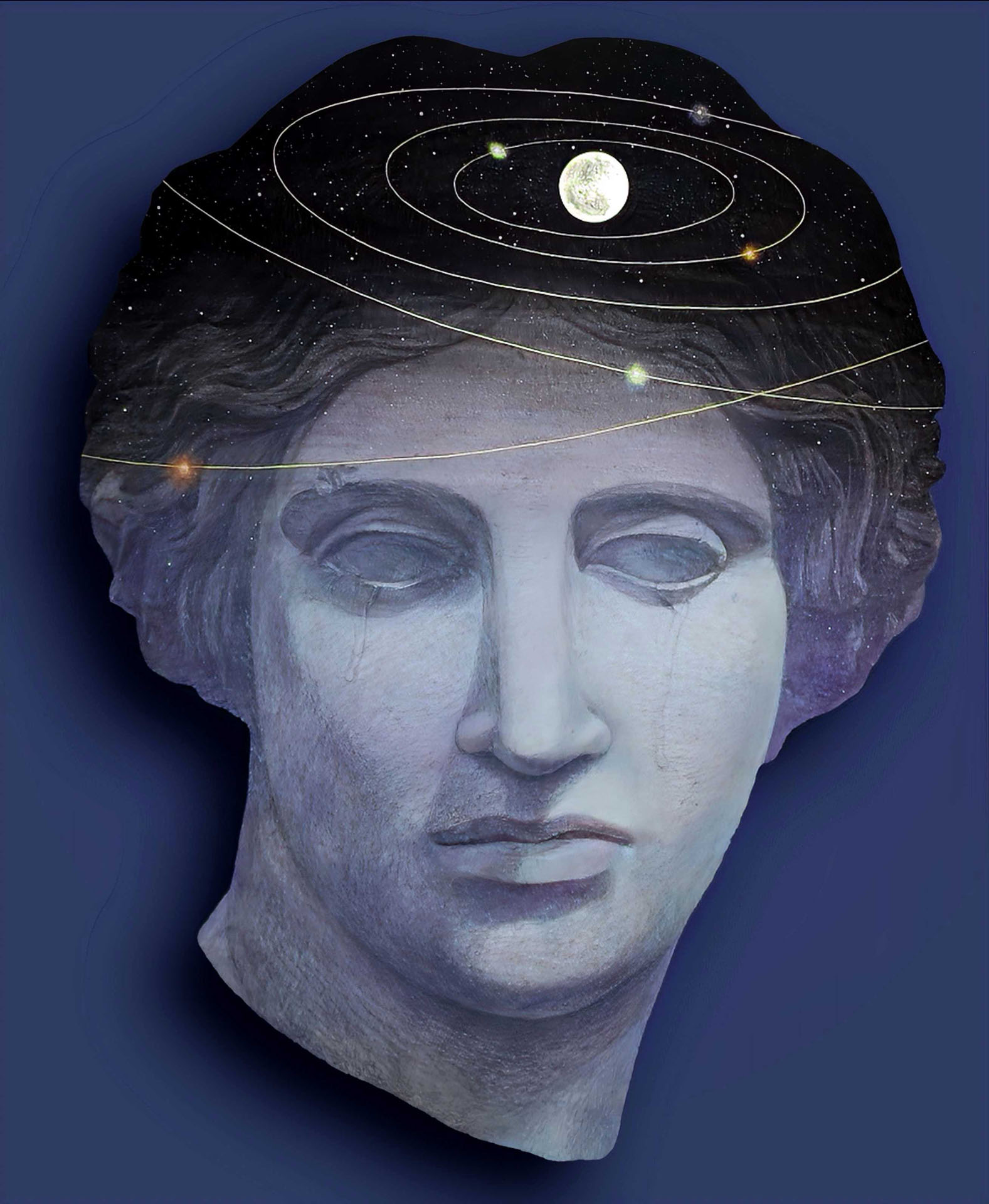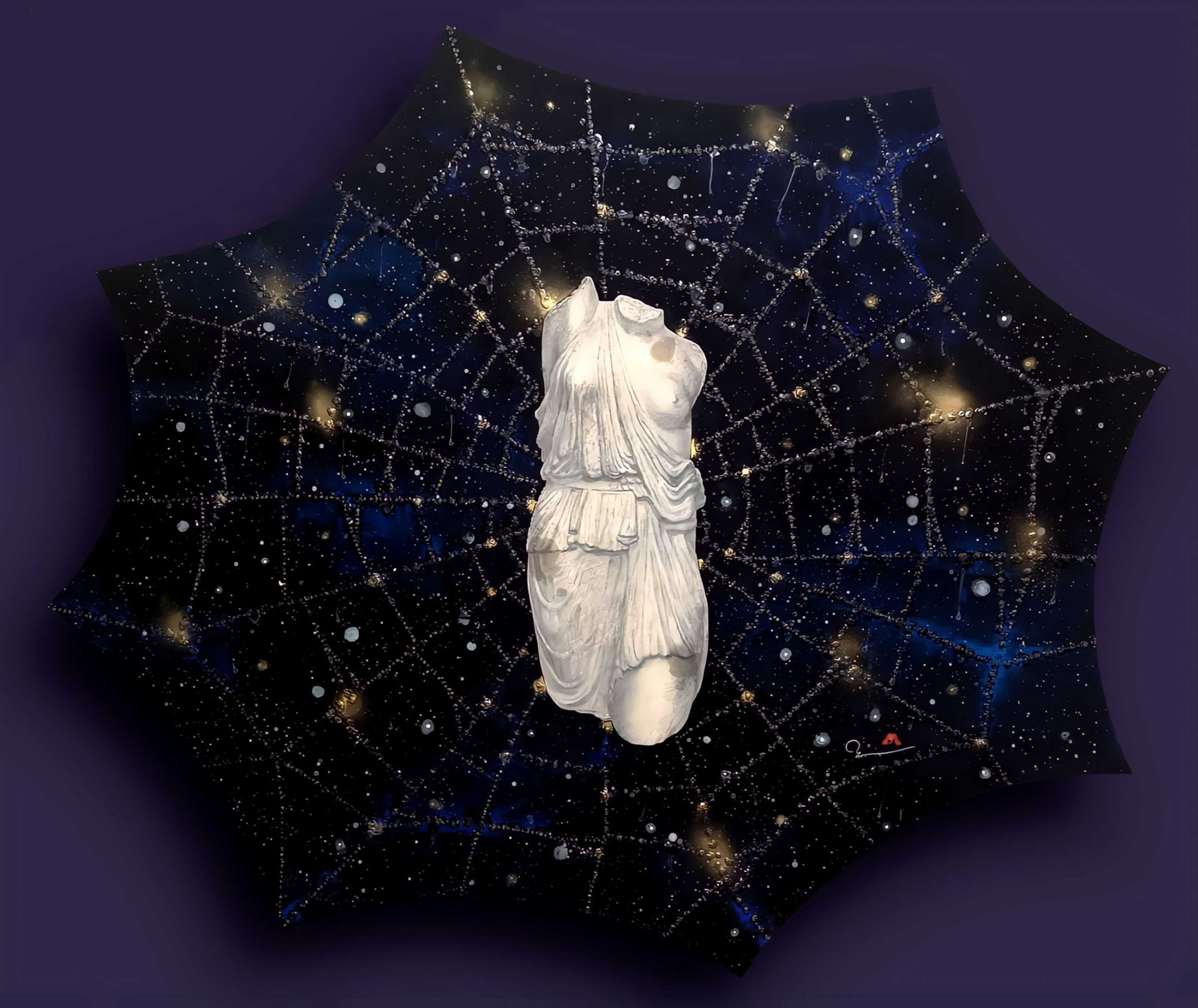Drawing the cry of the soul
While studying traditional Japanese painting, Yuko Takagi is attempting to transcend it. Her paintings are reminiscent of the Secession movement, and her kitschy motifs are reminiscent of pop culture, creating a worldview that transcends time and space.
Born in Shizuoka Prefecture in 1976. Since childhood, with paper, pencils, and tools, he was so engrossed in making things that he lost track of time, so it was natural for him to pursue a career in art. He majored in Japanese painting at Aichi Prefectural University of the Arts. After completing graduate school, he continued to study Japanese painting at the university as a trainee.
"The techniques of Japanese painting are so broad that when I look at the works of other Japanese painters, I often can't understand how they painted them. Japanese painting materials, including mineral pigments, are often affected by conditions such as temperature and humidity, and often don't turn out as expected, so there is a depth to them that you can study for a lifetime."
Takagi, who works as a Japanese painter, has been in contact with a wide variety of artists, including musicians, theater artists, and chefs. He has built up his own unique style without being limited to any particular field, and has presented not only two-dimensional works but also three-dimensional works and installation works. The theme he pursues is the spiritual world that lies deep within the human being.
This exhibition, "The Soul Cries," will feature 24 new works themed on the image of humans struggling to break free from extreme limitations, the touching of the heartstrings and the overflowing of tears, and the moment when the soul cries out. Takagi's cross-sectional perspective on art can be seen in his unique approach, such as motifs that are unimaginable in the image of Japanese painting, and the use of wax in the details of paintings made with mineral pigments, and the image of a vast world beyond the canvas.
All emotions are nourished
Takagi's gaze is directed at the state of the human heart. However, the reason he started to look at it was not exactly a happy one. Ever since he was a child, Takagi has been obsessed with the idea that he must be perfect as a person, which made life difficult for him. His ego became a "troubling place." By continuing to draw and express himself, he was able to overcome the conflict with the emotions that welled up inside him every day, which he says became "the magic that controlled him."
"In my late 20s, I wasn't getting the recognition I wanted in the art world, and the circumstances around me were also quite difficult. I was on the verge of a mental breakdown, being pushed between everything else. At that time, an acquaintance asked me, "Are you having fun drawing?" This became a big trigger for me to reexamine myself, and I realized that it is important to look at things from various angles, not just one. From there, I pushed myself hard at my work, and I feel that this led to my spiritual growth."
In this way, Takagi felt that all emotions, both positive and negative, were nourishment and that his soul was crying out. He found art as a magic that could find hope from within, rather than sinking into the darkness of self-consciousness. Since then, as an artist living in an era of heavy anxiety due to the Great East Japan Earthquake, the COVID-19 pandemic, and war, he has been creating works that will support people who are looking for a place to rely on.
This time, in addition to mineral pigments and foil, wax was used to express spider webs and falling tears. The candles that shine and illuminate the surroundings are a symbol of prayers that are close to people's hearts, and the lit fire represents the brilliance of life and the finiteness of time that is our human life.
"Their emotions are delicate and serious. But once they cast their spell, they can also become bold, seductive, and comical. Every emotion can become nourishment, and hope becomes the infinitely expanding universe."
Turning suffering into hope
The dynamic size of the works, which he has rarely worked on up until now, is told not in the first person but in the third person, as if looking down on his contemporary era, and the heat of his soul is directly felt. The heart has become a troubled place because it imagines a beautiful world. This overlaps with the real world in which we live.
Art is born from suffering. Takagi himself says, "It is during difficult times that I can create good paintings. Life is not easy and there are many unpleasant things, but it would be good if we could transform negative emotions into hope and courage and move forward."
Connecting suffering to hope. As our hearts open up to the magic that Yuko Takagi has quietly cultivated in her heart, we feel a world of hope emerge.








